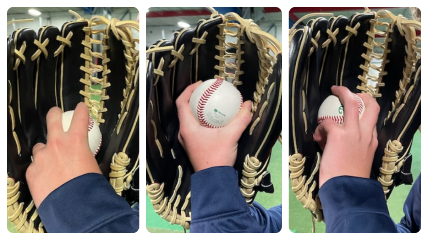Importance of Pitch Location and Pitch Type

Crucial to the art of shutting down hitters is the ability to locate pitches in the zone and make balls look like strikes (and vice versa). At the advanced level of baseball, control is more than just throwing strikes. Control means being able to pitch to a scouting report and locate pitches. Pitch location is the most important. No matter how a pitcher feels any certain day, location will win more times than not in the battle against the hitter. Most of the time, a pitcher will not be able to improve velocity or “life” during a game, but he can always fix the location on his pitches with a good mental approach and sound mechanics. As former big leaguer Mike Sweeney said, “God blessed each pitcher with a certain amount of ability to throw a ball." Locating pitches however is the most effective means of getting hitters out.
Location of the Fastball Pitches
Ninety percent of all pitchers use the fastball as their basic pitch or setup pitch. In professional baseball, pitchers throw more fastballs because of the wood bat and their ability to throw in the low to mid 90's. Even with the use of the aluminum bat at the high school and college level, a good fastball located properly in or near the strike zone can be a pitcher's bread and butter. A misconception many young pitchers have is that most hitters like to hit fastballs. Pitchers tend to believe fastballs are straight and easier to hit, and therefore they are afraid to use their fastballs. The key is locating the fastball in the hitter's weak spots where you can induce weak contact. If a pitcher can do this, his job becomes much easier because the located fastball sets up all other pitches. Location, not velocity, is the most important facet of throwing a fastball. Next is movement, and last in importance is velocity. As big league pitching ace Max Scherzer said, "That's when I'm at my best. When I can throw a fastball over in the count, just throw strikes both in and away, it just sets up all my stuff.”
Locating the Breaking Ball Pitches (curveball, slider, and sinker)
One of the most effective pitches in any pitcher's repertoire is the curve, slider, or sinker low and away. In most cases the pitcher wants the breaking ball to break into one location. For a right-hander, he should try to throw the breaking ball down and away from the right-handed hitter and down and into the left-handed hitter. The pitcher should practice this one location repeatedly in his bullpen workouts. Some pitchers have the ability to throw the back door breaking ball as well to mix things up (a right-handed pitcher throwing the ball to the outside corner to a left-handed hitter and a left-handed pitcher throwing the ball to the outside corner to a right-handed hitter). Very few pitchers can master this pitch, but those that do have a great pitch to use against a pull-oriented hitter (leaving the hitter flummoxed and out in front). Hall of Fame Pitcher Greg Maddux knew how to throw strikes that didn't look like strikes and locate his breaking pitches well. "(Greg) Maddux is a master. He didn't give us anything good to hit," as Cincinnati Reds Manager Jack McKeon once said.
Locating your Changeup Pitches
While throwing the changeup pitch, the pitcher must trust the grip and allow the grip to slow the pitch (not slow down their arm action). He must try to maintain his fastball arm speed, delivery, and follow-through. Quality arm speed and a good follow-through increases deception and location of the changeup is crucial. An average change-up on or below the knees is much better than a great change-up that is up and out over the plate. A change-up that creates deception, changes planes, and is thrown to the proper location is a wonderful pitch for a hurler at any level. A good change-up is usually 10 to 12 miles per hour slower than the pitcher's fastball (and the youth level a 6-8 mph speed difference is effective). The change-up is a great pitch in and of itself, but it also enhances the fastball, making it appear quicker than it really is. The key for youth pitchers (and at all levels) is working on your changeup pitch in bullpen practices before trying to throw a changeup in a game. The key is also consistency in being able to locate the changeup in the proper spots. Greg Maddux said it best, "Consistency is something you can always improve on. You can be more consistent with your mental approach, the things you do physically on the mound. Instead of doing 5 good pitches an inning, try to make six. You can always do more of what you are doing well and try to be as consistent as you can be."
In all, it’s best to learn to locate your pitches especially at a young age. If you are able to learn and practice them and consistently work on them, your accuracy will be spot on in the game which will give the pitcher confidence. Learning to locate will help you substantially as youth pitchers go into high school, college, or the majors. You will be ahead of other pitchers because you learned quicker and put the time and effort into pitch location and learning how different pitch types should be located to increase success.
